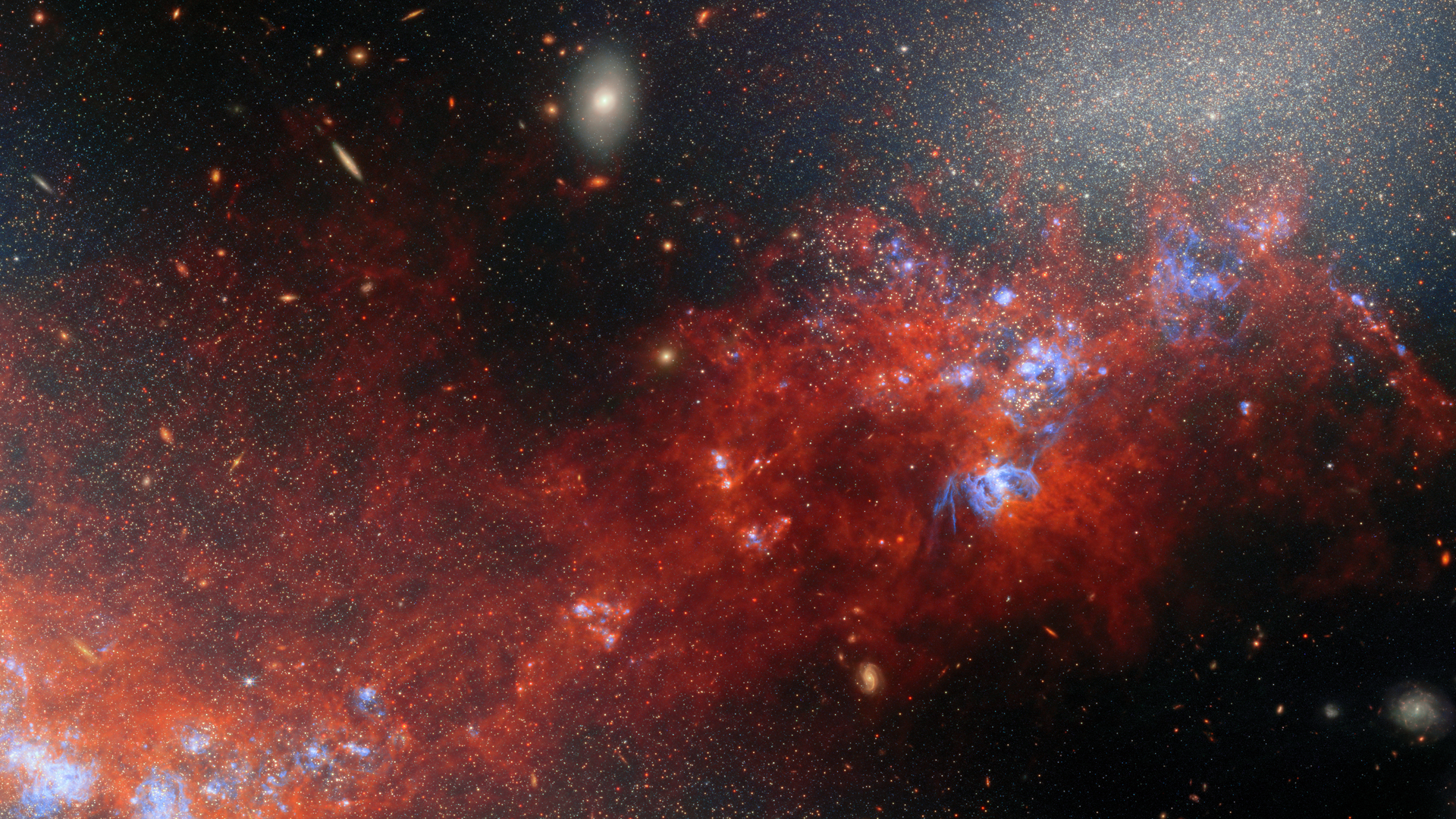Chinese company aims for suborbital space tourism with familiar rocket design
If you're seeing a mashup of Blue Origin and SpaceX, you're not seeing things.

A Chinese launch company is aiming to provide rides to space for tourists as soon as 2024, apparently drawing inspiration from the exploits of Blue Origin.
CAS Space, a commercial spinoff from the Chinese Academy of Sciences (CAS), is already developing rockets for commercial satellite launches and announced in August that it wants to send people up into space, albeit briefly.
According to the press release, CAS Space is working on a single-stage reusable rocket which would take as many as seven passengers on a 10-minute ride up above the Kármán line at 62 miles (100 kilometers), which is generally held to be the boundary between Earth's atmosphere and outer space.
Related: The latest news about China's space program
The illustrations (since deleted) of the CAS Space project quite remarkably resemble both Blue Origin's New Shephard suborbital space tourism rocket and SpaceX's Crew Dragon capsule.
While sharing similarities with New Shephard, differences include using five "Xuanyuan" kerosene-liquid oxygen engines in contrast to a single BE-3 liquid hydrogen-liquid oxygen engine on Blue Origin’s rocket.
The renders show grid fins near the top of the rocket, which would guide the rocket’s descent. And instead of landing legs the rocket would be "caught" by an arm attached to the launch tower, following a concept unveiled by SpaceX for its massive Starship Super Heavy rocket.
Breaking space news, the latest updates on rocket launches, skywatching events and more!
The crew capsule will meanwhile descend to Earth with the aid of three parachutes.
And so we have China's answer to New Shephard. CAS Space, a Chinese Academy of Sciences launch spinoff, is developing reusable suborbital tourism rocket. Ambitiously aiming for 1st flight demo test in 2022, tourism services in 2024. 7 passengers to 100 km https://t.co/2y2hlJxIBQ pic.twitter.com/y4F0TuSJ2zAugust 13, 2021
Whether CAS Space's plans are accurately depicted by the artwork in the press release is unknown and we’ll learn more in 2022, during which the company aims to carry out a first demonstration flight. A full suborbital test flight would follow in 2023 with suborbital tourism services beginning in 2024.
The timeline is certainly ambitious. Blue Origin's New Shephard had its first uncrewed flight in April 2015. Its first crewed launch took place more than six years and 14 launches later, carrying company founder Jeff Bezos and three others on a suborbital flight on July 20 of this year.
If all of this seems unlikely, it is worth bearing in mind that CAS Space (its full name is Beijing Zhongke Aerospace Exploration Technology Co., Ltd.) is a well-funded company with heritage, expertise and support that can help it on its way.
CAS is China's national academy for natural sciences and plays a small part in the country’s space industry, such as building a range of satellites and sounding rockets for experiments. CAS Space is looking to gain a foothold in China's emerging commercial space sector through leveraging CAS technologies and expertise in propulsion and other areas.
The firm was registered in December 2018. It started developing solid rockets before announcing it was pursuing more complex liquid propellant launchers. CAS Space is one of a number of commercial Chinese launch companies that have emerged since 2014 when China opened up areas of its space sector to private capital. It could also be making its first launch attempt in the near future.
CAS Space's ZK-1A solid rocket was stated early this year to be ready for a first launch in September. It is unclear if it remains on schedule. CAS Space is also constructing facilities in the southern city of Guangzhou.
The firm also tested a 50.7 pounds (23 kg) vertical launch, vertical landing demonstrator in April as a step towards reusable liquid propellant rockets. The successful tests would also be useful for its suborbital space tourism launcher.
Follow us on Twitter @Spacedotcom and on Facebook.

Andrew is a freelance space journalist with a focus on reporting on China's rapidly growing space sector. He began writing for Space.com in 2019 and writes for SpaceNews, IEEE Spectrum, National Geographic, Sky & Telescope, New Scientist and others. Andrew first caught the space bug when, as a youngster, he saw Voyager images of other worlds in our solar system for the first time. Away from space, Andrew enjoys trail running in the forests of Finland. You can follow him on Twitter @AJ_FI.

